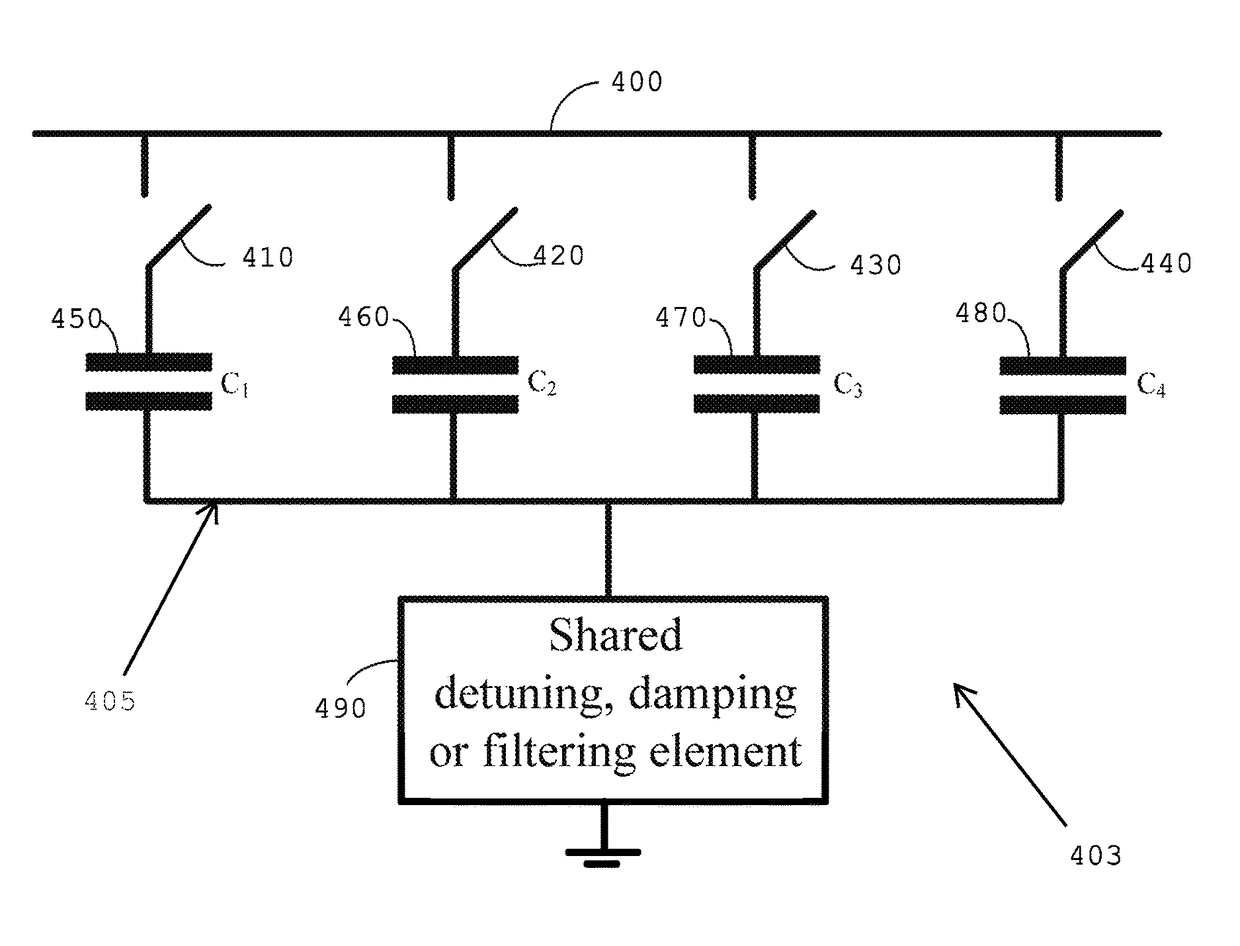System using a subcircuit shared between capacitors for providing reactive power
a technology of reactive power and capacitors, applied in the field of power systems, can solve the problems of resonance, significant amplification of 300 hz voltage/current, eventual damage to capacitors, etc., and achieve the effect of reducing the total cost and space requirements for mitigating resonance or filtering harmonics associated with multiple switchable capacitors, and ensuring the effect of resonance reduction
- Summary
- Abstract
- Description
- Claims
- Application Information
AI Technical Summary
Benefits of technology
Problems solved by technology
Method used
Image
Examples
Embodiment Construction
[0026]Referring to FIGS. 1A and 1B, depicted are schemes commonly used for mitigating harmonic resonance of shunt capacitors (all figures shown are in the form of single-phase diagram).
[0027]Referring to FIG. 1A, a bus 10 is coupled to a switch 20. Coupled to the switch 20 is a capacitor 30A.
[0028]Capacitor 30A is coupled in series to inductor 40 which is coupled to ground.
[0029]In the circuit in FIG. 1A, the size of inductor 40 is selected such that subcircuit 50 exhibits an inductive characteristic at frequencies higher than a frequency called the detuning frequency. This frequency can be the fundamental or the 3rd harmonic frequencies. If the system impedance is also inductive, resonance at harmonic frequencies that are higher than the detuning frequency can be avoided. This scheme has been widely used for low voltage (60 is denoted as the detuning element and 40 is the detuning inductor.
[0030]As an alternative to the above, the inductor 40 can be sized to make the total impedanc...
PUM
 Login to View More
Login to View More Abstract
Description
Claims
Application Information
 Login to View More
Login to View More - R&D
- Intellectual Property
- Life Sciences
- Materials
- Tech Scout
- Unparalleled Data Quality
- Higher Quality Content
- 60% Fewer Hallucinations
Browse by: Latest US Patents, China's latest patents, Technical Efficacy Thesaurus, Application Domain, Technology Topic, Popular Technical Reports.
© 2025 PatSnap. All rights reserved.Legal|Privacy policy|Modern Slavery Act Transparency Statement|Sitemap|About US| Contact US: help@patsnap.com



